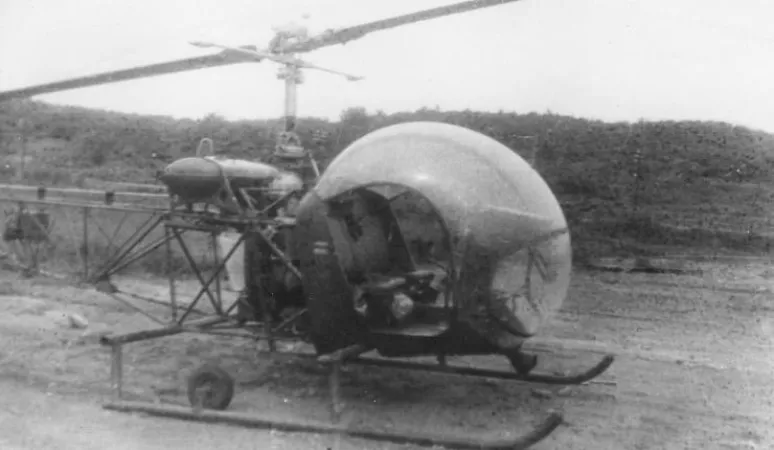How to fall off a mountain in a Helicopter
This article was originally written and submitted as part of a Canada 150 Project, the Innovation Storybook, to crowdsource stories of Canadian innovation with partners across Canada. The content has since been migrated to Ingenium’s Channel, a digital hub featuring curated content related to science, technology and innovation.
Carl C. Agar DFC was a pioneer in the field of small helicopter flying. He was a high altitude pilot for Okanagan Air Services Ltd in the mountains of British Columbia in 1947. He created a special technique for landing and taking off from high mountain perches using a Bell 47-B3 helicopter.
A helicopter’s fast-turning rotors creates lift to hover, while an airplane’s forward motion generates lift with its wings. The thinner air at higher elevations affects the amount of engine power produced to rotate the rotors fast enough to stay aloft, so hovering during take-off was very dangerous. His technique was to land on a rocky perch or wooden platform parallel to the mountain to unload his passengers. Then he would apply full power and jump sideways to free-fall down the mountainside to gain enough rotor speed to fly away.
Even as more powerful helicopters came into use, his technique became a standard practise to move supplies, survey crews and heli-skiers around the mountains of North America. He also developed techniques for lifting sling and long-line loads such as buckets of cement, steel power pylons, and more for the ALCAN project in Kitimat, BC during the 1950s.









![A block of photographs showing some of the people involved in the bombing of beluga whales in the estuary and gulf of the St. Lawrence River. Anon., “La chasse aux marsouins [sic]. » Le Devoir, 15 August 1929, 6.](/sites/default/files/styles/thumbnail_7/public/2024-09/Le%20Devoir%2015%20aout%201929%20page%206.jpg?h=584f1d27&itok=TppdLItg)






